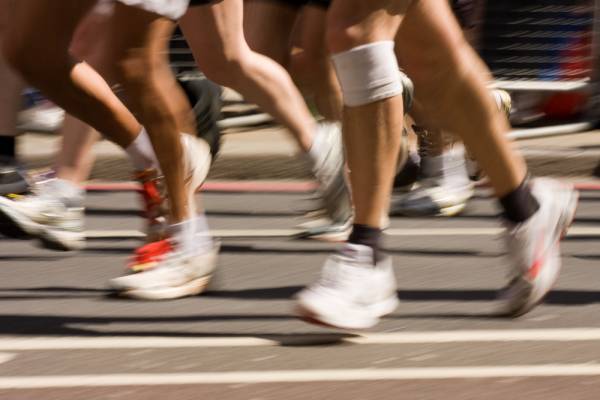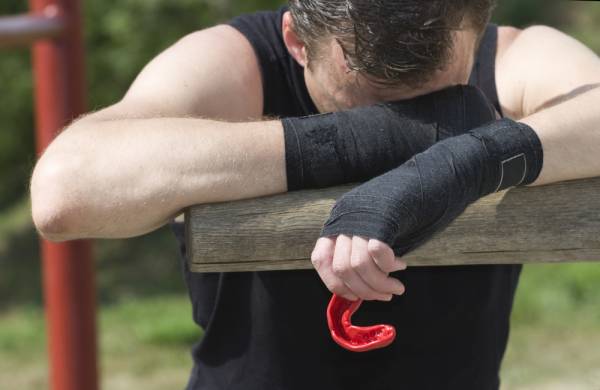“Getting hurt training for general fitness is stupid.” – Dan John
It’s amazing how a few decades of experience allows you to sum up various aspects of training into a few succinct words, but that’s about a perfect summation of how training for 90% of the population should be. I’ve been lifting weights for performance at times, and health and fitness at others, and can honestly say that in thirty years I’ve never once hurt myself in the gym while training for general fitness. And even when training for performance the only time I’ve injured myself was actually in the last three months. All my other injuries have come from actual sports training or competition.
One of the things I try to drill into the athletes I work with is that no one cares if you won training. There are no medals if you finish a workout first. There is no sponsor paycheck because you beat your training partner. But beat them on game day or race day and that is an entirely different matter.
Recently I asked the one-and-only Dan John his thoughts about the matter. Here’s what he shared with me:
If you compete: there are going to be times you have to go to the edge. You might fall off. If you do, live by these rules:
If you hurt one limb, train the other three. Hard. You will recover faster (by some miracle, I can’t explain why) and you might even fix a glaring issue.
If you hurt your core, that big area between shoulders and hips, take some quality time reviewing your journal and training program. If you don’t have a journal or training program, that is why you hurt you core.
If your injury requires surgery, focus on health. You should always focus on health: two dental visits a year, an eye doctor appointment every year, and a physical once a year. Now, with staples and stitches, take the other stuff (supplements, vitamins, flossing, quality life time) more seriously, too.
I’m not sure I can ever write an “Injury free guarantee” on a sports/games program, but there is one bit of advice that might get you close:
Little and often over the long haul.
Strive for quality over time and you might find less time in the trauma room.
To show this is not a new concept, though – that good health requires consistent effort – consider the words of Plato from 380BC, sent to me today by Spartan Coaching guru Joe DiStefano. “Lack of activity destroys the good condition of every human being, while movement and methodical physical exercise save it and preserve it.”
But sometimes the injuries we incur aren’t really fixable. They are, but then again they’re not. Take my hips, for instance. Two years ago I was doing a lot of Olympic lifts under the watchful eye of one of the best coaches in the world. What neither of us knew at the time was that my hips are not designed for deep squats like you might have on the bottom of the catch for a clean or snatch. And what was even worse for me than deep squats would be fast, deep squats under load. So the bottom position of a clean or snatch is murder for my hips.
What this weightlifting training led to was me not being able to walk without pain and heading off to see a doctor to find out the cause. (If you’re training for general fitness and health, the moment you find yourself in a surgeon’s office waiting to hear if it’s a needle or surgery you need, you should pause for reflection as to whether what you are doing is genuinely tied to long-term health, or instead to your ego.) This doctor visit led to x-rays that showed my hip structure was incompatible with these movements and also that I have labral tears and early onset arthritis. Just what you want to hear at the start of your fortieth year on the planet.
 After discussing treatment options I had a cortisone shot, which was immediately effective and got the inflammation down so healing could begin. I also stopped all lower-body work for a period of time. In fact, the only training I could do was swings and half get ups – everything else caused me pain. Rule one for me when injured is to avoid all activities that cause pain. This may mean the complete cessation of training altogether. If you keep causing yourself pain you’re not healing. I’ll add to Dan’s quotation above – the definition of insanity is doing the same thing over and over again and expecting a different result. Remove whatever it is that is hurting you, even if that means completely halting training in the short-term.
After discussing treatment options I had a cortisone shot, which was immediately effective and got the inflammation down so healing could begin. I also stopped all lower-body work for a period of time. In fact, the only training I could do was swings and half get ups – everything else caused me pain. Rule one for me when injured is to avoid all activities that cause pain. This may mean the complete cessation of training altogether. If you keep causing yourself pain you’re not healing. I’ll add to Dan’s quotation above – the definition of insanity is doing the same thing over and over again and expecting a different result. Remove whatever it is that is hurting you, even if that means completely halting training in the short-term.
People who have had some serious injuries will all tell you that no matter how well the surgeon says the operation went, things just aren’t the same. There’s no doubt they are better than they were, but in a lot of cases they’re not 100%. Along with my hip issues, I’ve also torn my hamstring off the bone and had it reattached. I still would rather have my hamstring where it is – about 90% post-surgery – than not at all, but if you’re used to high performance you notice that missing 10% because that’s where matches are won.
The hard part then is in teaching yourself what is now your new norm, and what you can do to adapt and make training fit you, not force yourself to blindly follow a plan you know is going to upset your body. Using myself as an example I spent a lot of time playing around with exercises to see what I could get away with and what I couldn’t. Here’s what I had to give up:
- All full Olympic lifts
- Power snatching from the floor
- Heavy front squats and pistols
- Recently I have also discovered that really high-tension core holds, such as those needed for many gymnastic moves like levers also upset my hips
So what am I left with? I can do power cleans off the floor. I can power snatch off blocks. All kettlebell variations of both clean and snatch are fine. Deadlifts are fine, and as much as I dislike them compared to my beloved clean and snatch I use them far more now than I used to. Back squats in shoes don’t upset my hips at all, as I can’t get as deep, so if I am going to squat then I usually pick back squats. However, mostly I use single-leg variations with my three main picks being single-leg deadlifts, step-ups, and Bulgarian squats. I couldn’t care less that many fitness gurus say you need to squat or you’re not a man. I’d prefer to walk without pain tomorrow, thanks. But really, other than having to avoid a few exercises I am free to train mostly how I enjoy anyway, barely having given up anything.
 And if I go somewhere, as is often the case when I travel to train with others, I just let them know upfront what I can and can’t do. There’s nothing worse than making the effort to go overseas to train and getting so dinged up on day one, because your ego couldn’t handle admitting that some exercises were kryptonite for you, that you can’t train for the rest of the week.
And if I go somewhere, as is often the case when I travel to train with others, I just let them know upfront what I can and can’t do. There’s nothing worse than making the effort to go overseas to train and getting so dinged up on day one, because your ego couldn’t handle admitting that some exercises were kryptonite for you, that you can’t train for the rest of the week.
The thing most people lose sight of, and that Dan John makes clear up above, is that in nearly all cases people are training for the health benefits. So if you’re training for health, why would you pick exercises that hurt you? And does it really matter if you squat one way or another provided you work to keep that pattern? One of the reasons people get hurt in the gym in the first place is ego. One of the reasons they keep getting hurt is the same. They simply won’t allow themselves to accept that they’ve done permanent damage and that certain things are beyond them.
In conclusion, I’m going to share some more of coach Joe DiStefano’s thoughts. When I asked him how people should approach training and injury, he had this to say:
I’ve seen unrelenting grit without proper governance drive people into more trouble than they started in. Ultimately, consciousness must become the guide to all movement, exercise selection, and acute variable manipulation. Each and everyday you must do the best you can with the mind and body you have today, with an appreciation that yesterday and tomorrow have nothing to do with it. Allow the mind to push the body and the body to push the mind, but remember this relationship must have balance over the long term.
Photos courtesy of Shutterstock.






